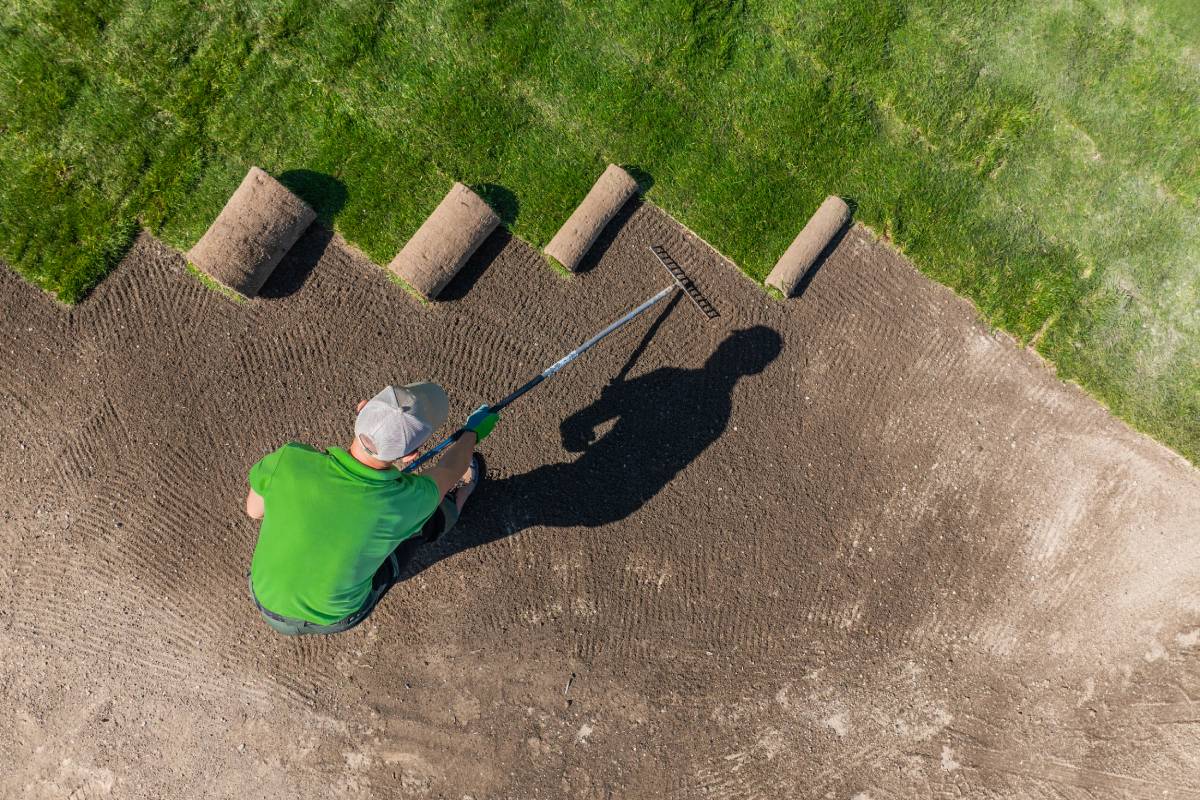Buffalo grass is a popular choice for Australian lawns, known for its lush green appearance, resilience, and ability to thrive in a variety of climates. Whether you’re a first-time homeowner or a seasoned gardener, achieving the perfect buffalo lawn requires a solid understanding of the grass’s needs and how to properly care for it.
From sunlight and watering to mowing and fertilising, every step plays a crucial role in keeping your buffalo grass lush, healthy, and vibrant. In this guide, we’ll explore the best practices for buffalo lawn care, including how to address common challenges and seasonal maintenance tips that will help you create and maintain a beautiful lawn all year round.
Understanding Buffalo Grass: A Quick Overview
Buffalo grass (Stenotaphrum secundatum), commonly known through varieties such as Sir Walter, Palmetto, and Sapphire, is a warm-season turf that grows via above-ground runners called stolons. This makes it excellent at self-repairing from minor damage and wear.
Buffalo grass is suited to most parts of Australia, especially warmer regions. It tolerates moderate foot traffic, has good drought resistance, and maintains its colour better than many other varieties in winter (especially soft-leaf types).
What Does Buffalo Grass Need to Thrive?
To maintain a perfect buffalo lawn, your grass will need the right balance of:
- Sunlight:
Most buffalo varieties need 4–6 hours of direct sunlight daily. While it can tolerate some shade, growth slows in heavily shaded areas. Choose a shade-tolerant variety if needed. - Water:
Buffalo grass is drought-tolerant but still needs consistent watering, especially during hot, dry spells. Water deeply and infrequently typically once or twice a week to encourage deep root growth. - Nutrients:
Buffalo lawns require regular feeding to stay thick and green. Use a high-quality slow-release fertilizer at the beginning of each season (four times a year). Nitrogen-rich fertilizer in spring and summer encourages growth, while potassium helps build resilience before winter. - Air and Drainage:
Compacted soil stifles buffalo growth. Aerate the soil at least once a year (spring is ideal) to improve water penetration and oxygen flow. - Regular Mowing:
Keep your buffalo lawn trimmed to a height of 30–50 mm. During peak growing seasons (spring and summer), mow weekly or fortnightly. Avoid cutting more than one-third of the blade at a time.
The Best Lawn Care Routine for Buffalo Grass
Buffalo grass care varies by season. Here’s a detailed seasonal guide:
Spring (September – November)
Spring is the most important time to give your lawn a fresh start after winter.
- Fertilise: Apply a balanced slow-release fertiliser to kickstart growth.
- Mow: Begin regular mowing once the grass shows signs of active growth. Keep blades sharp to avoid tearing the soft leaves.
- Aerate: If your lawn feels spongy or water pools, core aeration will help.
- Weed Control: Use a broadleaf herbicide suitable for buffalo grass to remove bindii, clover, and dandelion.
Summer (December – February)
Buffalo grass thrives in summer, so this is when it grows most actively.
- Watering: Water early in the morning. Aim for deep, infrequent watering to encourage strong root systems.
- Mow Frequently: Maintain optimal height and mow more often if growth is vigorous.
- Fertilise: Apply a second round of fertiliser in early to mid-summer.
- Pest Control: Watch for lawn grubs and armyworms. Treat immediately with appropriate pest control.
Autumn (March – May)
This transitional season is perfect for preparing your buffalo grass for winter.
- Fertilise: Apply a fertiliser high in potassium to improve cold tolerance.
- Weed Management: Spot-treat weeds that may have sprouted during summer.
- Reduce Mowing: As growth slows, reduce mowing frequency but continue to keep the lawn tidy.
Winter (June – August)
Buffalo lawns naturally slow their growth or go dormant in winter.
- Minimal Watering: Only water if there’s a long dry spell.
- Avoid Heavy Traffic: Minimise walking on the lawn to prevent wear.
- Monitor for Weeds: Hand-remove or treat cool-season weeds early before they spread.
Additional Tips to Perfect Your Buffalo Lawn
- Use the Right Fertiliser:
Always use a buffalo-safe fertiliser. Some products, especially those with high iron or sulphate content, can damage buffalo grass. Look for slow-release, controlled nutrient formulas. - De-thatching (Scarifying):
Over time, buffalo grass can develop a thick thatch layer. If the lawn feels spongy or growth slows, consider scarifying in early spring to remove excess thatch and promote new growth. - Top Dressing:
Apply a thin layer of sandy soil or a lawn blend after de-thatching or aerating. This helps level the lawn and encourages root development. - Lawn Edging and Trimming:
Keeping clean, sharp edges around garden beds, driveways, and paths makes the lawn look neat and well-maintained. - Dealing with Shade:
If parts of your lawn are heavily shaded, consider pruning trees or planting a more shade-tolerant buffalo variety. Keep these areas slightly longer when mowing to increase photosynthesis.
Professional Services for Buffalo Lawn Care
While the tips above should set you on the path to a perfect buffalo lawn, professional lawn care services can help take the guesswork out of the equation. Lawn care experts can provide tailored fertilisation schedules, expert pest and weed control, aeration, and advice specific to your property’s conditions.
If you’re too busy or unsure of how to approach complex lawn care tasks, hiring a professional can ensure that your buffalo grass stays in top shape all year long. A View Turf in Sydney offers comprehensive lawn care services for buffalo grass, providing everything from installation to ongoing maintenance to keep your lawn healthy and vibrant.
How often should I fertilise buffalo grass?
Ideally, four times a year, once per season. Spring and summer are the most important for strong growth, as fertilising during these months boosts the grass’s vitality and encourages healthy root development, which is essential for resilience throughout the year.
Can buffalo grass grow in full shade?
Buffalo grass is more shade-tolerant than other warm-season grasses, but it still needs some sunlight. Aim for at least 4 hours of direct or filtered light each day. In areas with limited sunlight, choosing a more shade-tolerant variety or thinning out surrounding trees can improve growth.
How do I revive a dying buffalo lawn?
Start by identifying the cause, such as lack of water, pests, disease, or nutrient deficiency. Water deeply, apply fertiliser, and mow at the correct height. If the damage is severe, you may need to top-dress or replant bare areas to restore the lawn’s density and vitality. Regular maintenance after recovery is key to prevent further damage.
Spending Time in the Garden for a Perfect Buffalo Lawn
Spending time in the garden is not only a great way to enjoy the outdoors but also crucial for maintaining a healthy and vibrant buffalo grass lawn. The act of tending to your lawn, whether it’s mowing, fertilizing, or checking for pests, can have a positive impact on your physical and mental well-being.
Research has shown that gardening can reduce stress, improve mood, and even increase physical activity levels. By actively engaging with your buffalo grass lawn, you’re not just ensuring its health; you’re also benefiting your overall well-being.
Conclusion
Creating the perfect buffalo lawn takes commitment, but the results are well worth it: a lush, green, and inviting outdoor space that adds value and beauty to your home. By giving your buffalo grass what it needs water, sunlight, nutrients, and care you’ll enjoy a vibrant lawn throughout the year.
Stay consistent with seasonal maintenance, be proactive in dealing with pests or weeds, and don’t forget the occasional pampering your lawn deserves. With time and care, your buffalo grass will reward you with a perfect lawn that’s the envy of the neighbourhood.



